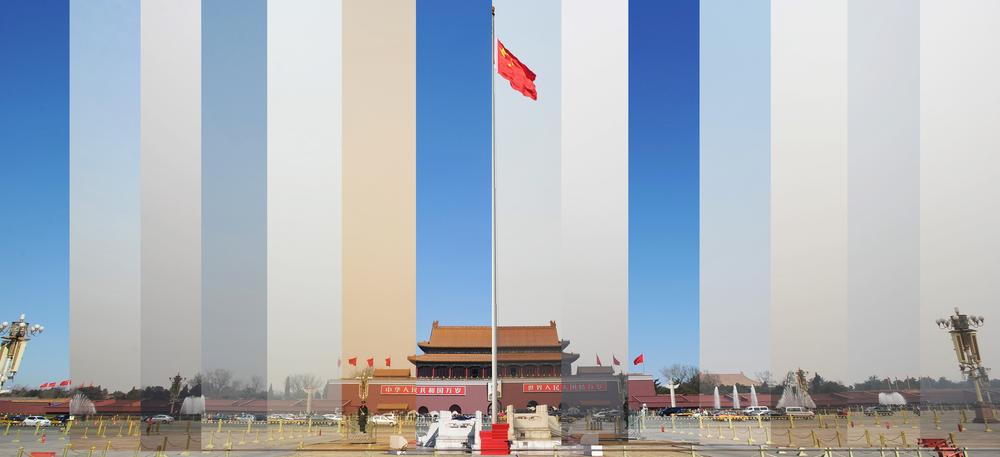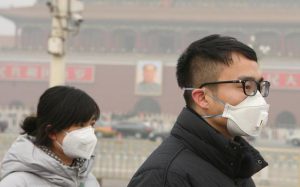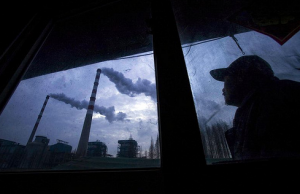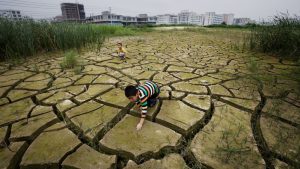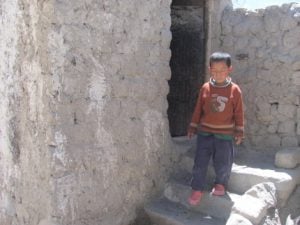2013 saw Chinese cities badly hit by smog. The public is calling for the government to take serious action to respond to the problem, but is totally unprepared to do anything themselves. Reducing industrial pollution is in tune with the government’s intention to improve the economic structure and avoid environmentally damaging growth, so it may actually happen. However, pollution caused by individual households is an even bigger problem, and there is very little awareness of that. Even among the elites there is no consensus about such things as heavy car use. As far as the public is concerned, everything is the responsibility of the government.
Water pollution continues to be a serious cause of reduced water supply. Large cities like Beijing and Shanghai are suffering a fast drop in underground water levels. Unlike pollution, water shortage is less publicly debated. However, we do see increased media attention on this issue, which is bound to become more of a public issue in the near future.
It is estimated that untreated urban garbage and waste is growing by 3% per year in China. More than 4 billion tonnes of garbage has been left untreated so far, mainly household garbage and construction waste. As a result, more than one third of Chinese cities are surrounded by garbage dumps. Urban households are not taking responsibilities except for some garbage sorting projects in large city neighborhoods which are rarely enforced. As urban regeneration accelerates, the main solution for construction waste has been to bury it underground. This has damaged the soil and caused pollution to underground water systems.
Interestingly, this problem was brought to public attention as a result of local residents protesting against installing garbage treatment facilities in cities. The not- in-my-backyard mentality may only cause delays in solving the problem. However, the disputes can be turned into an opportunity to educate the public about the seriousness of the challenge and at the same time stimulate technological innovations.
Xue Jin, assistant professor in urban planning in Aalborg University, Denmark and author of ‘Economic Growth and Sustainable Housing: An Uneasy Relationship’
In the past 30 years, China has experienced unprecedented urbanisation with more and more people becoming beneficiaries of economic reform. But along with the increase in average affluence has been a degraded urban environment. This poses risks to local residents’ health and well-being, and also imposes pressures on global warming. Several developmental trends in China indicate that the urban environment will further deteriorate if proper policies and urban planning are not adopted.
Firstly, the building boom in China will not stop, given that rapid urbanisation will continue, and the general aspiration to reach Western living standards by increasing per capita floor area. It’s not only consumption of natural materials and land to accommodate more dwellings that will continue: growth in total building stock will lead to increased consumption of furniture and electrical equipment, as well as the energy demands of heating and cooling living spaces.
Thirdly, urban expansion will require further large-scale infrastructure projects, and for undeveloped land to be converted into built-up areas. Moreover, the political agenda now characterises urbanisation as an engine of growth, so there is a risk of subordinating environmental sustainability to local economic growth.
The challenges to urban environment management not only emerge from the local need for clean air and livability, but also from the need for climate change mitigation and adaptation. The pursuit of urban sustainability is a concern for local citizens, people living in other parts of the planet, and future generations.
Vance Wagner, China Co-Lead and Senior Researcher, International Council on Clean Transportation
2013 will be remembered in China as the year of the “airpocalypses.” Smoggy skies throughout the year (e.g. Beijing in January, Harbin in October, Shanghai in December) drew unprecedented attention from the media, the general public, and China’s leaders. The Chinese government responded by issuing a surprisingly aggressive series of new plans and regulatory actions. The most important of these, September’s State Council Air Pollution Prevention and Control Action Plan, establishes new binding air quality improvement targets for cities, mandates a host of specific pollution control actions such as fuel quality improvements and regional coal caps, requires cities to adopt emergency pollution response plans, and much more. Some provinces and cities also issued their own, detailed set of additional directives; Beijing famously “declared war” on PM2.5 before releasing its 84-point plan.
However, monitoring is just a first step, and the Chinese leadership is making significant investments to address the underlying causes, including a $277 billion dollar air pollution control plan. The task of implementing this plan, which eliminates new coal-fired power plants in some areas and specifies targets for pollutant reduction, is made even more challenging given the Chinese leadership’s emphasis on urbanisation as a means to promote consumer-led growth. Increased urbanisation and rural migration to new cities will lead to a greater strain on natural resources and potentially compound China’s pollution problem.
Steven Q. Andrews, an environmental and legal consultant based in Beijing
China’s air pollution crisis will continue to be a significant issue next year, and more attention needs to be focused on regional sources and solutions. From the coal fired power plants and factories of Hebei afflicting the Beijing-Tianjin-Hebei Region, to marine emissions around Hong Kong impacting the Pearl River Delta, improving air quality requires stronger regional cooperation. But if Beijing is still not accurately reporting pollution levels, what is happening far away from the capital?
Such basic questions as whether or not air quality in Beijing has improved remain unanswered. With the focus on fine particulate (PM2.5) attention has moved away from coarse particulate (PM10). However, because PM2.5 reporting has just recently begun, analysis of PM10 concentrations is necessary to look at longer term trends.
Chinese government reporting in the capital area focuses on the Beijing Tianjin Hebei region, so understanding what has happened in Tianjin may shed some light on reporting in Beijing. While the cities are near to each other, the trends in pollution have been quite different. Beijing’s PM10 concentrations have decreased or remained steady every year between 2008 and 2012, dropping 10% from 122 micrograms per cubic meter of air in 2008 to 108 micrograms. But Tianjin’s pollution levels have gone up, then down, then up again, and PM10 concentrations were nearly 20% higher in 2012 than in 2008.
Although reporting only began recently, PM2.5 data that has been released by the government also raises questions. In the first half of 2013, Beijing’s PM2.5 concentration averaged 103 micrograms per cubic meter of air and PM10 averaged 128 micrograms – an average PM2.5/PM10 ratio of over 80% (including days over 100%). While in the first half of 2013, Tianjin’s PM2.5 concentration had an average ratio of 68%.
Questions to be addressed in the next year include: Why have PM10 concentrations in Beijing shown a steady decrease when neighboring Tianjin has shown significant variation and an overall increase? Why is the PM2.5/PM10 ratio in Beijing so much higher in Tianjin and any other city in China?
There are ambitions plans to decrease air pollution across China in the next five years, including a 25% reduction in Beijing by 2017. In order to ensure regional improvement, it is important that these targets are met through actual improvements in air quality and not through certain cities gaming their air quality data.
